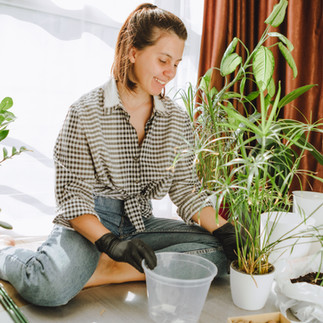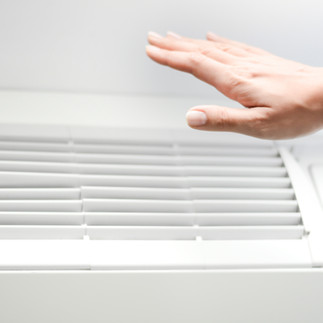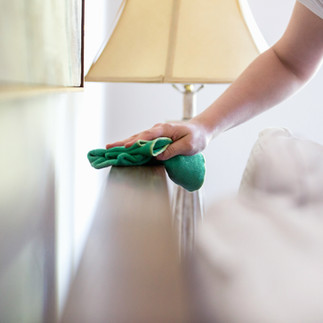
Top 7 Tips on How to Improve Indoor Air Quality: A Holistic Approach
- Juliana Ferrazzi
- Jul 27, 2024
- 2 min read
Top 7 Tips on How to Improve Indoor Air Quality: A Holistic Approach

With the sweltering summer, I’m finding
myself craving air conditioning and being inside a lot more. This is proving to be the hottest summer in recent memory. But while indoors, it’s vital to remember that our indoor air quality is crucial for our health and well-being. Since we spend so much time indoors, making sure the air we breathe is clean and free from pollutants is more important than ever. Here’s a down-to-earth guide on how to improve indoor air quality using a holistic approach.
1. Choose Natural and Non-Toxic Materials
Start by using natural and non-toxic materials in your home. Traditional building materials and finishes can emit nasty chemicals called volatile organic compounds (VOCs) that pollute your air. Instead, go for low-VOC paints, natural fiber carpets, and solid wood furniture without harmful finishes.
2. Add Houseplants
Houseplants aren’t just for decoration—they’re natural air purifiers too. Plants like spider plants, snake plants, and peace lilies can absorb toxins like formaldehyde, benzene, and trichloroethylene. Adding a variety of houseplants can significantly improve air quality while giving your home a fresh, natural vibe.
3. Improve Ventilation
Good ventilation is key to keeping your indoor air fresh. Make sure to regularly open windows and use exhaust fans in kitchens and bathrooms. If you want to go the extra mile, consider installing a mechanical ventilation system to improve air circulation and filter out pollutants.
4. Use Air Purifiers
Air purifiers are great for removing airborne particles like dust, pollen, and pet dander. Choose one with a HEPA filter, which can capture tiny particles and improve air quality. For an extra boost, look for air purifiers with activated carbon filters to get rid of odors and VOCs.
5. Keep Your Home Clean
Regular cleaning helps reduce indoor pollutants. Dust surfaces, vacuum carpets and rugs with a HEPA filter vacuum cleaner, and wash bedding often to minimize dust mites and allergens. Ditch the harsh chemical cleaners for natural alternatives made from vinegar, baking soda, and essential oils.
6. Skip Synthetic Fragrances
Synthetic fragrances in air fresheners, candles, and cleaning products can release harmful chemicals. Opt for natural alternatives like essential oil diffusers, simmer pots, beeswax candles, and naturally scented cleaning products to keep your home smelling fresh without compromising air quality.
7. Pick Eco-Friendly Furniture
Furniture can be a big source of indoor air pollution. Look for eco-friendly furniture made from solid wood, bamboo, or recycled materials, and avoid items with harmful chemicals. Whenever you buy a new piece, air it out outside, in order to avoid off gassing in your home
Stay Informed and Advocate
Educate yourself and your family about the importance of indoor air quality. Keep up with the latest research and practices, and advocate for healthier environments in schools, workplaces, and public spaces. By raising awareness, you can help promote cleaner air and healthier living conditions.
Improving indoor air quality doesn’t have to be complicated. By adopting these holistic practices, you can create a healthier, more harmonious living environment that supports your well-being. Breathe easy and enjoy the benefits of a cleaner, greener home.
Breathe easy!
Juliana 💚




























































Comments